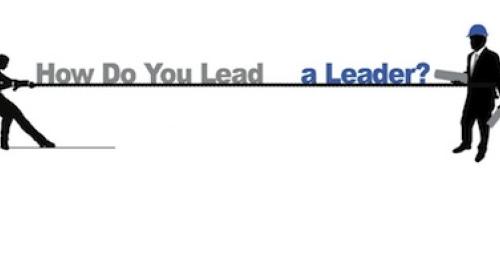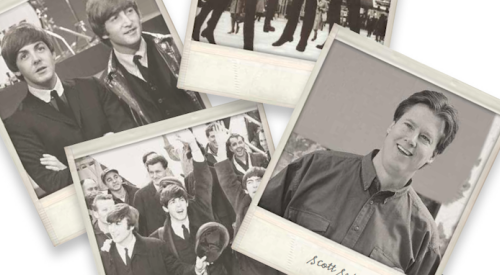The year 1976 will always be among the most vivid in my memory. It was the year of the American Bicentennial. It was the year a little-known governor from Georgia became the first elected post-Watergate and post-Vietnam president. It was the year of "Rocky," "Roots" and the death of Mao Tse-tung. It was the year I got married. It was the year the Cincinnati Reds swept the Yankees out of the World Series without using so much as a single pinch hitter. It was the year my father died. And it was the year that Bruce Jenner won the Olympic Decathlon and became an international superstar.
Bruce Jenner's ascent to fame was of particular interest to me because back in those days I resembled him just enough that it was not unusual for someone, especially if it was late and he or she had been drinking, to say, "Hey! You look like that Olympic guy!" Once, at the famous Cubby Bear bar across from Wrigley Field, a young woman was so convinced I was the real Bruce Jenner (incognito) that I finally agreed to sign an autograph if she promised not to tell anyone else I was there. So I did, and as she ran off to show her friends, I escaped to another establishment.
Bruce Jenner came out of tiny Graceland College in Iowa to break the Olympic Decathlon record and was recognized as the world's greatest athlete on the cover of Sports Illustrated, among many other accolades. So what's that got to do with us? It actually has a lot to do with you, me, Jack Welch and many of the readers who wrote the sometimes emphatic e-mails, both pro and con, that I received in response to my June column in PB: "Rank & Yank — The Curious Legacy of Jack Welch."
I wish there was enough space to reprint all of the letters because a lot can be learned from them. To sum up, the supportive comments centered on personal, negative experiences with the Welch system of personnel management whereby you rank your people each year and classify 20 percent as superstars, 70 percent as competent players and 10 percent as slugs, soon to be yanked. Some readers lauded me for "telling it like it is" and agreed that eventually, these plans backfire and say more about problems in management than problems with everyday workers. Interestingly, those arguing against my position did not, by and large, recount personal, positive experiences with the Welch personnel philosophy. Rather, they cited General Electric's results as prima facie evidence that what Jack did — and apparently whatever he did — worked. Over and over I read what has become one of my least favorite clichés of all time, "You can't argue with results."
When people use this expression, I often think to myself, I guess you could have said that about Hitler in 1942, right? Or how about the mafia? Or MCI, Enron and Tyco? Or RJ Reynolds and Philip Morris? How about our current crop of baseball sluggers? But hey, as Dick Vitale might say in frenetic splendor, "It's all about the results, baby!"
Unfortunately, the previously mentioned examples are not very instructional because each reflects people or organizations getting very impressive results by doing really bad things. So we assume that the lesson does not apply to us — or to GE. Thus, for a long time I was stymied in my pursuit of the perfect analogy to get people to understand the trap of accepting bottom-line results as evidence of good process or practices. Then I happened to catch a quick glimpse of a Bruce Jenner infomercial on TV and, like magic, the answer appeared before my eyes.
Let me pose a question. I've already told you that Jenner achieved the rank of world's greatest athlete by blowing away the field in the decathlon. So, can you guess in which of the 10 events he was considered "world class"? The discus? 100-meter run? In which would Jenner have been able to earn at least a bronze medal? Pole vault? High jump? In how many would he have finished in the Top 10 at the Olympics? Long jump? Hurdles? Remember now, we are talking about results. Jenner had them in spades. He even graced our boxes of Wheaties for seven years!
So being the committed American business-benchmarkers that we are, do we look at his results and tell our budding young athletes to "be like Bruce"? You want to be the best in the javelin toss? Toss as Bruce tossed. You want to reach the top rung on the high jump? Jump as Bruce jumped. You want to smoke 'em in the 400 meters? Run as Bruce ran. Right? Well, back to the earlier question. In how many of these events was Bruce actually an exceptional performer? I had a hunch about this and began an Internet search. This led me to a Mr. Frank Zanowski, author of three authoritative books on the Olympic Decathlon. I posed the question to him and here in part is his reply:
"None of Bruce Jenner's individual event performances were good enough to qualify for either the Olympic Trials or the Games. In fact, none were remotely close. For example, his best 400 meters before Olympic Trials was in the low 48 second range. It would take a 46+ 400-meter run to qualify for the U.S. Trials and a 45+ to qualify for the Olympic Games."
So there's your answer. Jenner was not even "remotely close" to qualifying for even the Olympic Trials, let alone a team birth, in any single event. He was most likely not even in the Top 100 in the world in even one of the 10 events. So you say you can't argue with results? Well, at a very minimum, you have to be very, very careful accepting them at face value.
Here we have the results of one of the world's greatest athletes and yet he wasn't great at any of the 10 components that gained him that title. None of his skills, individually, were worth copying. Likewise, over and over again, people cite the bottom-line results of a company, get all excited and, especially if the CEO has written a popular book, want to rush right out and cherry-pick pieces and parts of what they do, and then install them in their own organization. They assume that if the end results were great, that all of the things they did in the process of getting there must be equally great. Yet, could it be that the particular piece or part that you are copying was in reality something that the company with the results did not do so well? Could it be that some of us are feeling a little silly about now?
This is what I believe happened at GE, because I have seen it in so many other firms. If you broke out 10 key components of business success, GE was, indeed, great and even world class in two or three elements or perhaps even five or six. In areas such as strategic acquisition and capital management they were undoubtedly at the top of the game and deserve all the recognition they get. And that was enough to put them up at the top in bottom line results. That was also enough to make up for the two or three components in which they were just average and one or two in which they could have simply stunk.
Benchmarking is alluring and with the right attitude we can learn a lot from other companies that perform well. It can also be a seductive trick-box as companies latch onto non-productive practices without understanding the complete picture, thereby finding themselves wondering how they got in such a mess.
Once again I am reminded of the old admonition from Dr. Deming, "You cannot copy — you must understand why." So can you argue with results? Absolutely. In fact, that should be your default option. It is not only possible, but common for an individual or an organization to put up impressive bottom-line results despite serious shortcomings in some of their processes. Remember the lessons from an amazing guy named Bruce. By doing so, you might avoid a journey down the rabbit hole with a guy named Jack.












